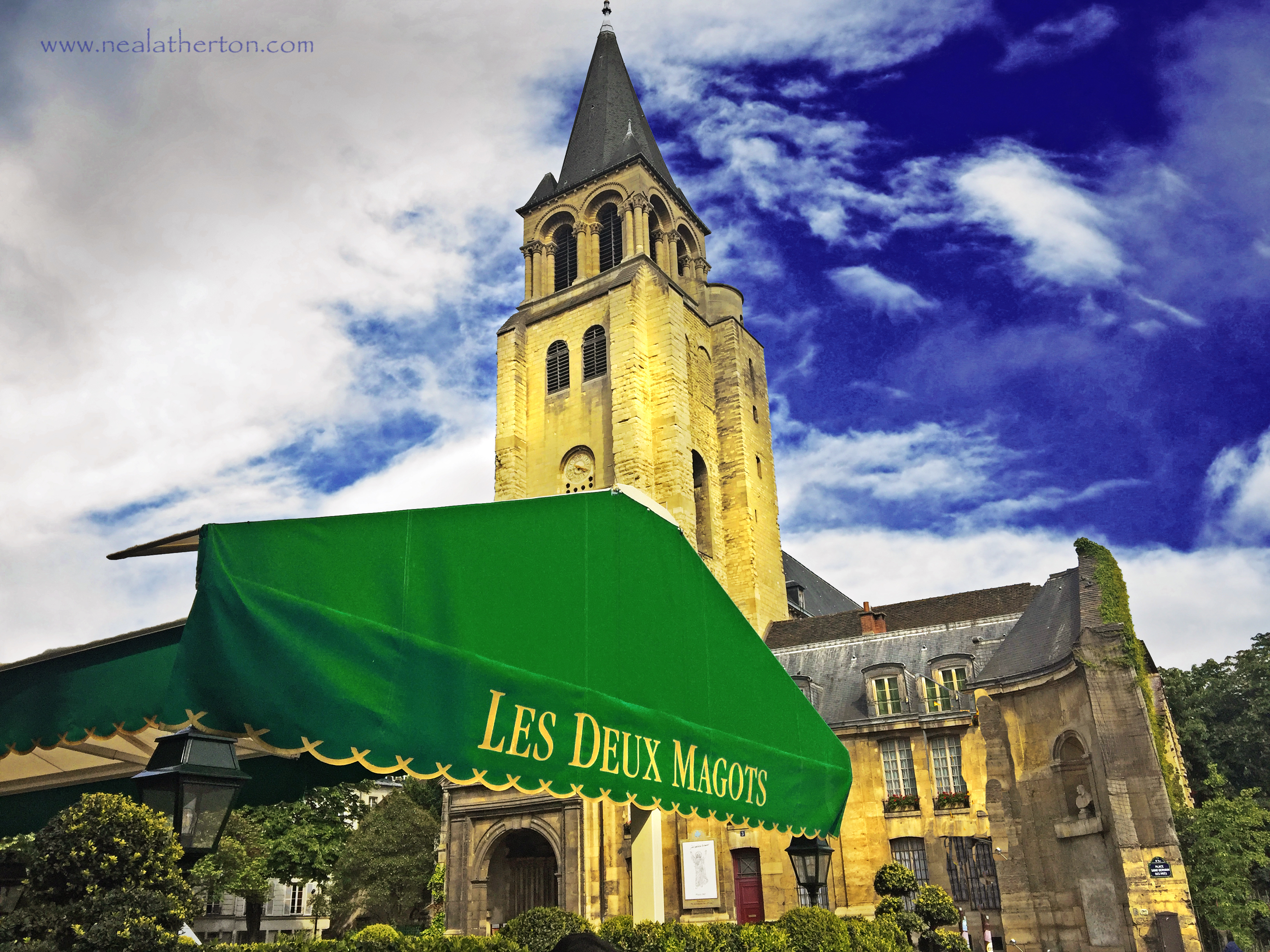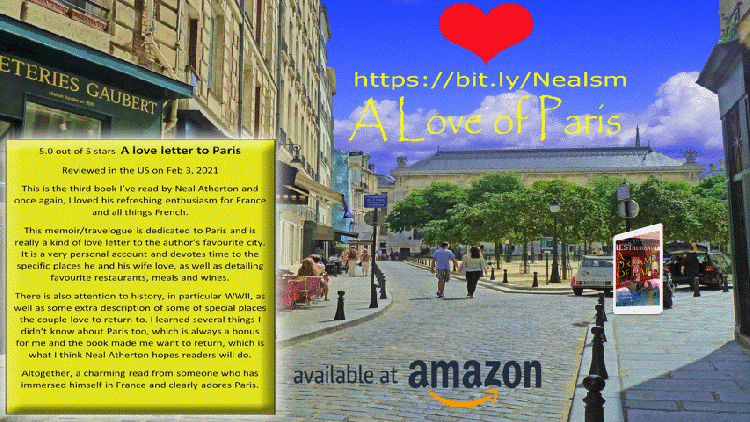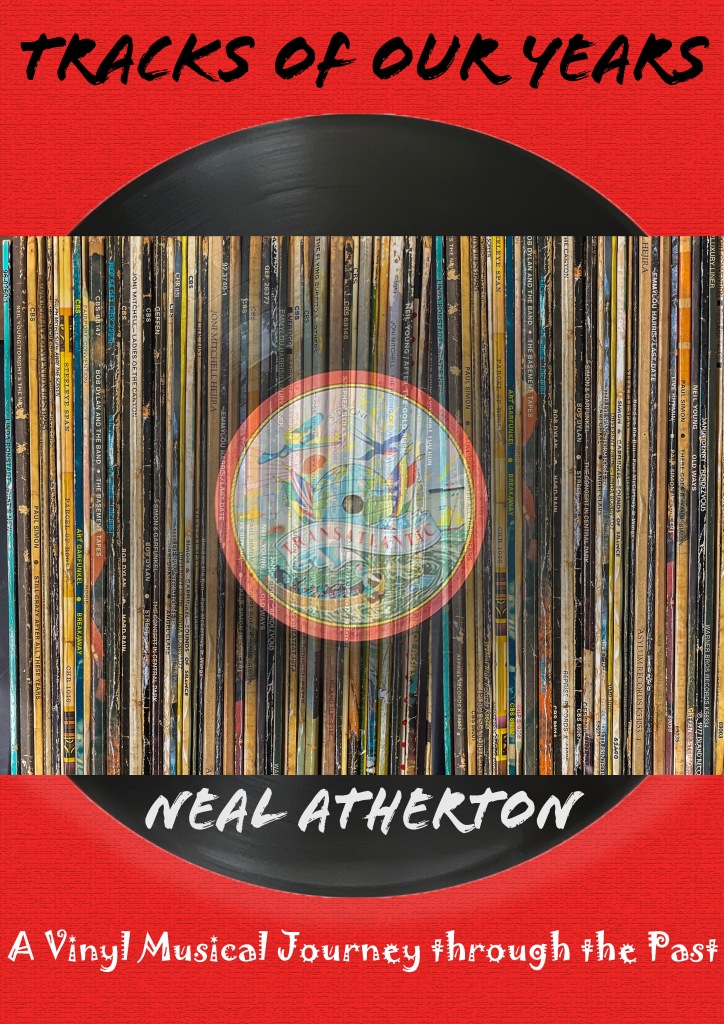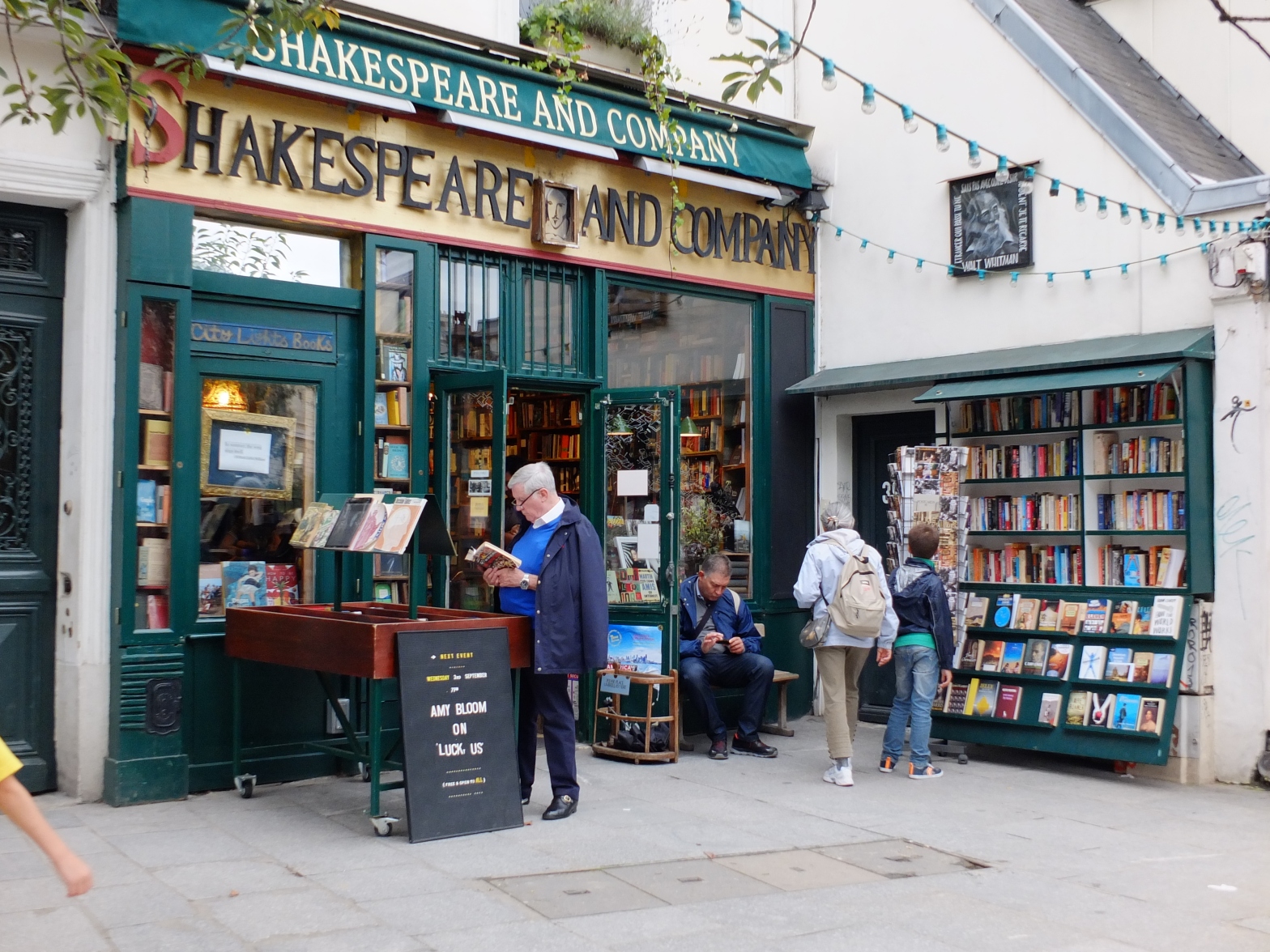Please Enjoy my Travel Books on Amazon – FREE on Kindle Unlimited https://bit.ly/bookneal
This is the FULL chapter from my book ‘A DREAM OF PARIS’
I know many of you have enjoyed the excerpt so here is the chapter in full
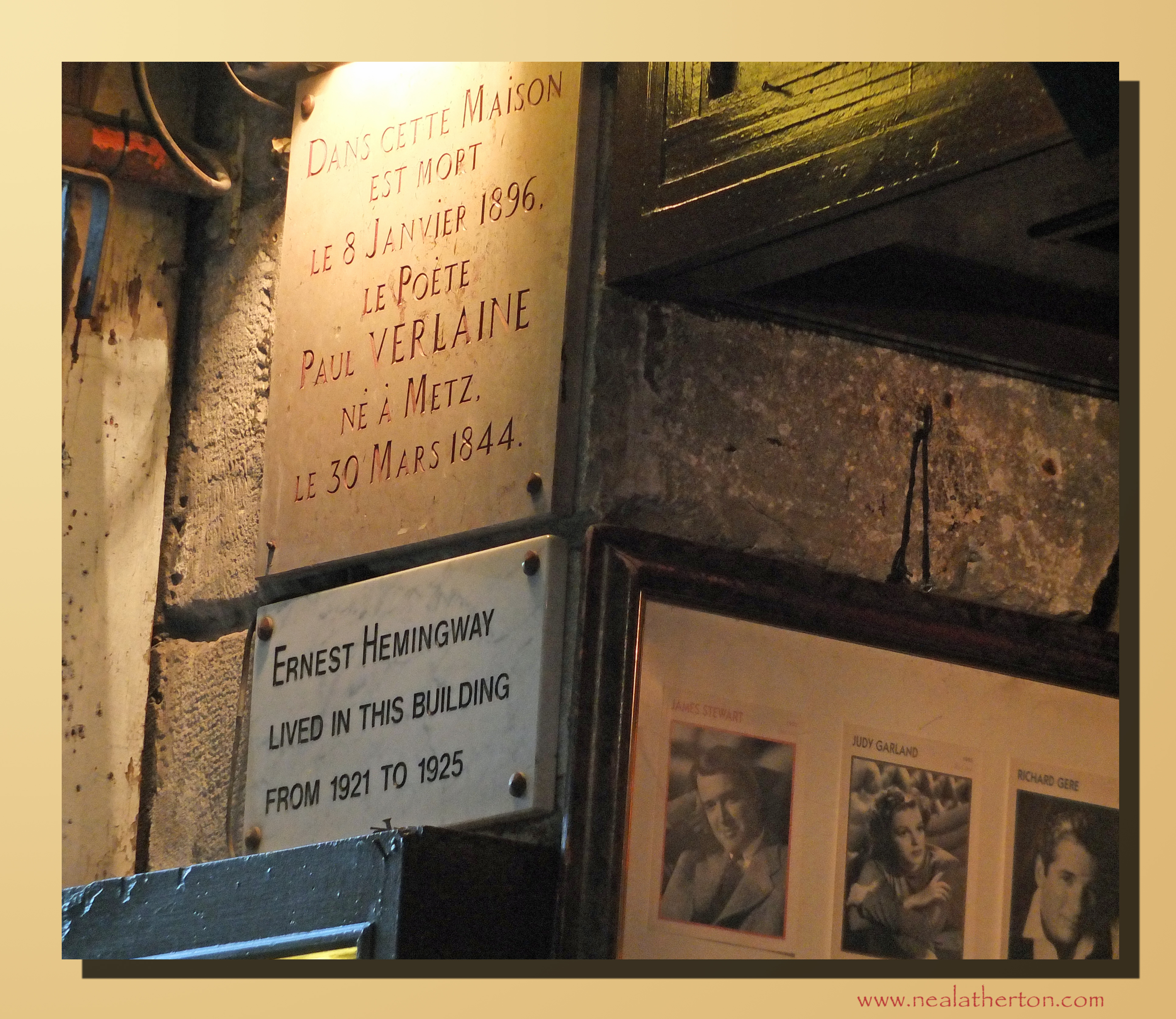
One of the most evocative books about Paris could be considered to be Ernest Hemingway’s ‘A Moveable Feast’. If ever I need inspiration to write about Paris or to make plans for another visit then that is the book that clinches my mood and motivation. It works every time for me even though you do have to take some of his Paris memoir writing with a reasonable sized pinch of salt. He paints such insightful but sometimes harshly unsympathetic portraits of the characters from the era, the writers and artists that dominated ‘20s Paris. Describing the life and ambiance of the city at that time period so well – he constructs a painting in words. His portrait of F Scott Fitzgerald made me laugh, cry and wince at the astonishingly eccentric tales he recalled. Yet it is a book that has such a depth of sadness too. Like my taste in music it appeals to my melancholic side – as my daughter says; ‘the sadder the better’. Certainly there is a sadness surrounding the future aftermath of Fitzgerald and Zelda’s tragically short lives spiralling downhill shortly after these events. It is though the final chapter of a book that was written just before Hemingway’s lonely death nearly forty years detached in time from the events in the book that conveys his deep regret. He threw away the happiness of his life in Paris with his first wife Hadley and their young son. There is not always something better around the corner, often what we already have is all we need for our contentment. It is a book that can be a Parisian guide but today we have something more visual based on his work.
The Woody Allen film ‘Midnight in Paris’ is themed on Hemingway’s book as any cursory read of it will establish. Really though it is a film that does more for the Paris tourist board than any amount of advertising. It is a love letter to a great city. The film recreates the times of the 20’s that Hemingway so eloquently describes, an era that the film’s main character Gil adores as he is bewilderingly entranced to be transported back to that time. Adriana, his new muse, prefers La Belle Époque but he cannot understand wanting anything more than to be experiencing the lively writing and arts scene of Paris in the 20’s. I am with him on that, but really all the book and the movie do is to convince you that Paris is the finest city in the world. When I arrive at the Gard Du Nord on the Eurostar from London then my current era waiting outside the station is just fine by me. The filming locations for ‘Midnight in Paris’ are well documented and in fact Hemingway makes a fine job of that. So if you want to follow them all it is easy to do in our smartphone era. I will take you through on a mixed journey, some of the places in the film that I love. Also bring in some parts of Paris that historically are so very interesting and should be part of your visit. If your time in Paris is all fine dining then you are missing out on a broader experience.
If you are going to start on a history and writing tour of Paris then I suggest it begins on the steps of the church of St Etienne du Mont, Place Sainte-Geneviève, 75005. The actual steps used in the film where Gil waits for the time travelling car and his famous hosts are just around to the side of the church. From here they look down Rue de la Montagne Sainte Geneviève, the road up which the car approaches. It is a supremely evocative location and it is worth taking the time to search out on the internet a photo taken on 22nd August 1944 of armed resistants just coming down from the area of the steps at the height of the struggle to liberate Paris from the German occupiers. Historical fact and fiction can be found being enacted side by side on the streets of Paris and in your imagination. If you go back around to the front of the church onto Rue Clovis and head towards the Latin Quarter by turning right onto Rue Descartes you will come to a small but perfectly formed restaurant – La Maison de Verlaine. The clue is in the title but it was not a happy place when Verlaine died there in a miserable state as a result of his alcoholism. It is also a building where Hemingway rented a small attic room and took himself off to write in peace and seclusion. There is a delightful story in his book about the goatherd taking his flock every day past Hemingway’s building and milking the goats to order as the locals emerged with their containers. It is certainly an evocative street. We have eaten on the terrace at this restaurant of an evening and the food is excellent. The location is pure Paris left bank so don’t let me stop you going. Just a little farther up is Place Contrescarpe which again features in Hemingway’s life and times in Paris. This is a place where he describes almost with affection the bar humming with the pungent smell of bodies and drunkenness. It is a vivid portrait you can almost sense the reality of from the page.
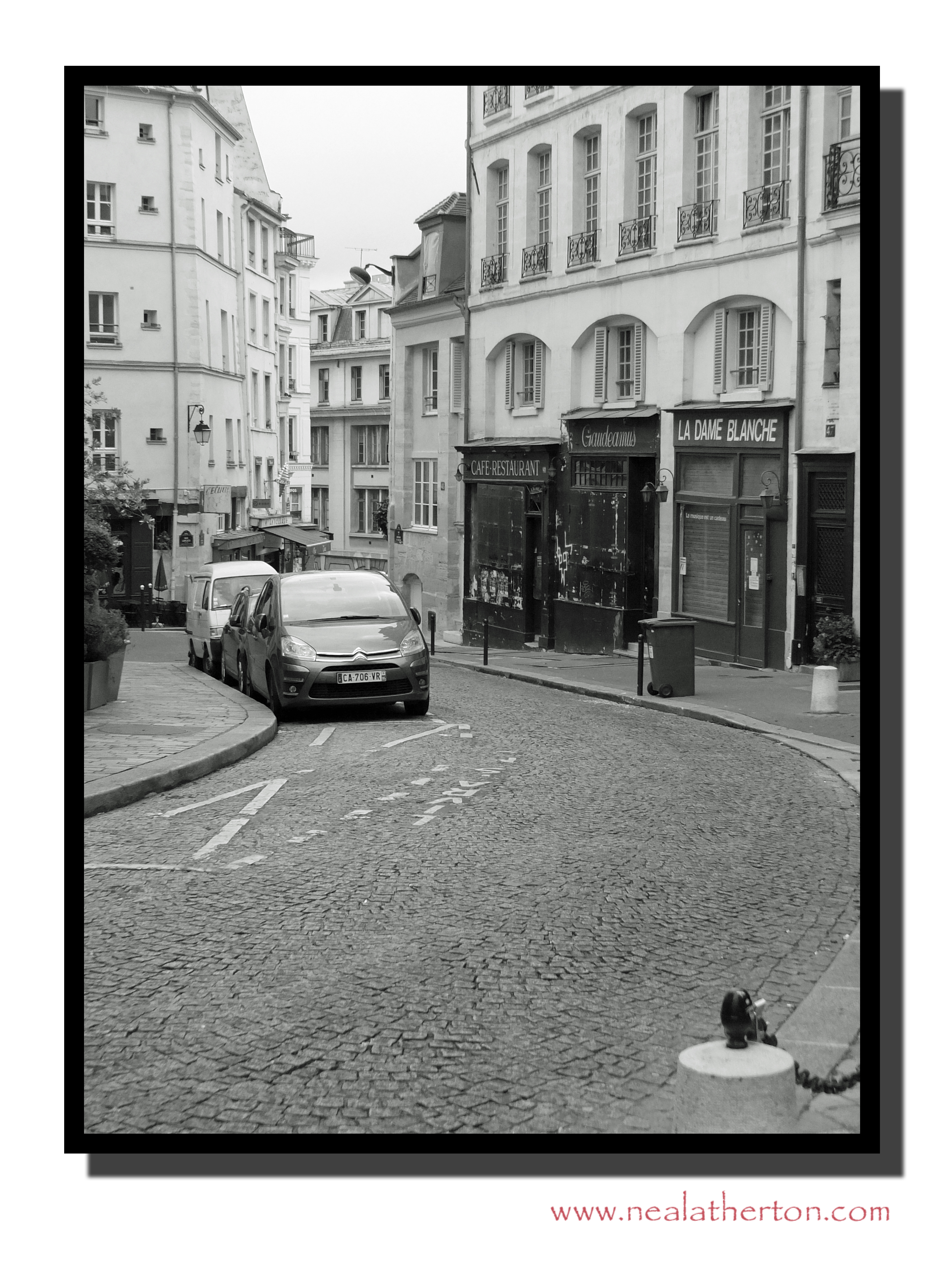
Today it is a lively square and to sit and eat at a table (we ate overly large portions of Greek food one night at L’Ile de Crete) gives you quite a show as life quite literally revolves around you. It is a place that is perfect for riding a motorbike around and around or posing in an open topped car. A ready supply of onlookers at the cafes and bars will either admire you or stare in total disdain.
Around the corner at 74 Rue Cardinal Lemoine is the building that houses the small apartment that the Hemingways lived in from 1922. He describes their lives here so affectionately despite the way Hemingway cultivates a lifestyle of relative poverty as a writer that seemingly is always relying on the odd cheque arriving for an article he had submitted. The area still retains a character today but back in the 20’s it was a place far removed from the modernity and chic of Paris today. They were clearly a very happy family unit in this lively area.
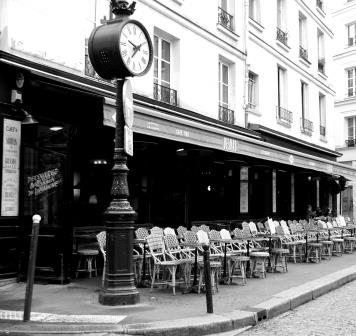
Retrace your steps back towards Place Contrescarpe and look out for Rue Rollin on your left, a street that leads through to Rue Monge. This route is worth the detour for a couple of reasons. Rue Rollin makes you feel as if you are in a provincial town rather than a city like Paris. To me it almost felt like a street in Burgundy, a town like Beaune. The real surprise of Rue Rollin comes at the end as you emerge onto Rue Monge. There is an extraordinary exit. It is a cul-de-sac for cars but there are two flights of steps either side of the street and these go down a beautiful frontispiece facing the street. This is bedecked with plants and flowers and if you are here at the right time of year with everything in full bloom it is a gorgeous photo opportunity.

Once you are onto Rue Monge and if you have an interest in architecture, particularly art deco then it is worth a short walk across the road. Start heading to the right, finding the Metro station Monge. Admire the front of the Metro with the beautiful ironwork on the entrance. A great photo shot in black and white. Go back the way you came and stay on that side of Rue Monge for a genuine unexpected surprise. It may be that you are completely unaware that Paris has its own Roman amphitheatre, a genuine one from the first century AD. Neither did I until some years ago when we stayed at a hotel on Rue Monge – Hotel des Nations St-Germain and very pleasant it was too. Across the street there was a sign above a passageway at No. 47 Rue Monge over which was a stone carving of a Roman soldier’s helmet. The sign said ‘Arenes de Lutece’ but there was certainly no great fanfare accompanying it. As you watched from the window of our hotel the daytime scene of people busying themselves with the business of getting to work and school, watching the tourists making their way down to the Seine and the Islands, you hardly ever saw anyone going through the gateway. If you go to the front of the entrance way there is a little more information (in French) as to what lies beyond. Looking down the short passageway it has to be admitted the prospects are a little unpromising. However it is definitely worth stepping inside. As you emerge into the light the area gives off the appearance of a small park, perhaps a children’s play area and here you may well encounter some youngsters playing soccer. Unmistakably though you are now in a very well preserved, compact Roman Arena. It is a pleasant space, away from the traffic noise of Rue Monge. It is a place where people may sit and read or just stroll through on their way to work. It will have very few tourists so please make a visit. When you return home you can amaze your friends with this discovery and your knowledge of hidden Paris.
Time to move on with a pleasant stroll down Rue Monge and then left onto Rue des Ecoles until you come to Rue Racine on your left. The goal of this walk is to reach Polidor restaurant, certainly a Hemingway destination and this historic building was heavily featured in ‘Midnight in Paris’. Even if you are not going to dine here (cash only – no cards) it is well worth a look and again bring your camera (or these days your phone).
Before we get to Polidor it repays a few moments pause outside the Restaurant Bouillon Racine previously known as a Chartier Restaurant. This is a building of Art Nouveau splendour both outside and in and is in fact listed as a historical monument of Paris. Apart from boasting a fine reputation for its food it has another much darker claim to fame. One of the most extraordinary verdicts in a French murder trial came after an event that took place in the street outside this restaurant. On May 25th 1926 the President in exile of the Ukrainian National Republic, Symon Petliura was assassinated by a man named Sholom Schwartzbard. He claimed to have lost all 15 members of his family in Jewish pogroms in the East. This was a horror that he held Petliura personally responsible for. Schwartzbard made no attempt to flee from the scene nor did he in any way claim that he was not responsible for the murder. Despite the cold hard facts of the evidence he was acquitted by the French jury basically on the grounds that his actions were justified. In effect such a man as Petliura had no right of protection because of his alleged crimes. It is not a verdict we would expect today but it is one that had been argued previously and it has a place in French history. It is still a verdict that resonates today with the animosity between Ukraine and Russia. The prosecution at the trial put forward that Schwartzband was in fact a Russian agent and that view holds good to many Ukrainians even now. There is plenty of interest on the streets of Paris and it always repays the effort of seeking it out. On the left hand side as you continue along Rue Racine you come to Rue Monsieur le Prince and there is the venerable Crémerie-Restaurant Polidor.
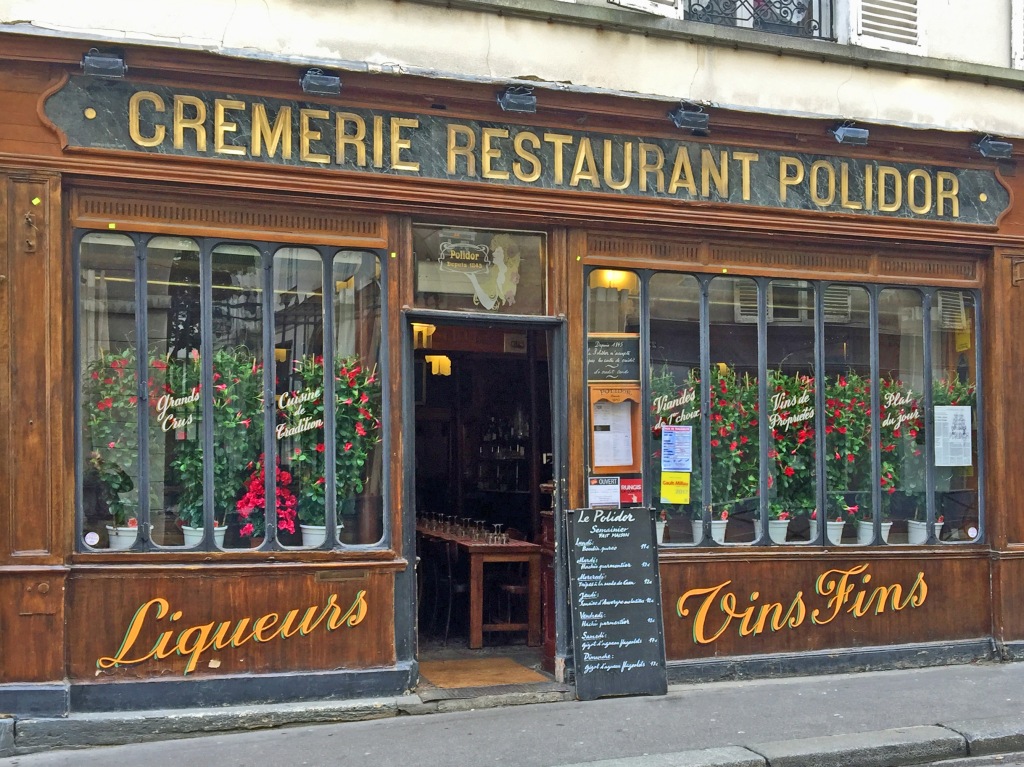
This eating place is a throwback to the times of Victor Hugo and of course Hemingway and the contemporary artists and writers. The interior is little changed from the days Hemingway would have patronised this restaurant. It plays a central role in ‘Midnight in Paris’ although it has to be said there is not a sign of the laundromat that Polidor transforms into. This is a restaurant to savour with a menu that is right out of the Belle Époque and they have no intention of changing any time soon thankfully. The exterior is a remarkable throwback to another age and one of the finest photo opportunities in Paris. You may have to be more sociable than usual and share a table.
From here it is a relatively short walk to the Boulevard St Germain and on to three café/restaurants that are synonymous with the writers of Paris. Brasserie Lipp is often referred to by Hemingway in ‘A Moveable Feast’ and it takes little imagination today to place this establishment in its historical context. It always feels very 20’s/30’s to me and certainly sets the mind racing as you contemplate the stories the tables could tell. Hemingway famously goaded the ‘friends’ he had cruelly portrayed in his novel to come at an arranged time and shoot him at a Brasserie Lipp table. Across the road are the two famous cafés that always seem to be in competition for clientele and of course they are. They have historically competed for the favour of writers and artists down the decades. Some preferred to sip a coffee for hours and write at a table at Café de Flore and some at Le Deux Magots. Some fell in and out of favour with their regular haunt and interchanged the two. Today it is a must see destination for many and plenty of visitors are happy to pay a coffee price that would have horrified Hemingway and others who were allowed to sit and write for a few centimes back in their day. It is undeniably an experience and just once maybe it is worth the cost to watch the world go by. You can have that world just wondering if you may be a ‘someone’ which of course you are to your family and friends. It is a little game to play for a pleasant moment in time.
I have only scratched the surface of artistic Paris and the historical gems that are to be found. I do encourage you to do more research and have a clear plan before you go. There is so much to see and experience beyond the obvious. You will take so much more away with you in memories and knowledge if you dig deeper than the ‘tourist’ sites. It also depends on how far you wish to walk and for that reason it seems the right time to bring this chapter to a close. Be assured however that there is far more than I have portrayed waiting to be discovered.
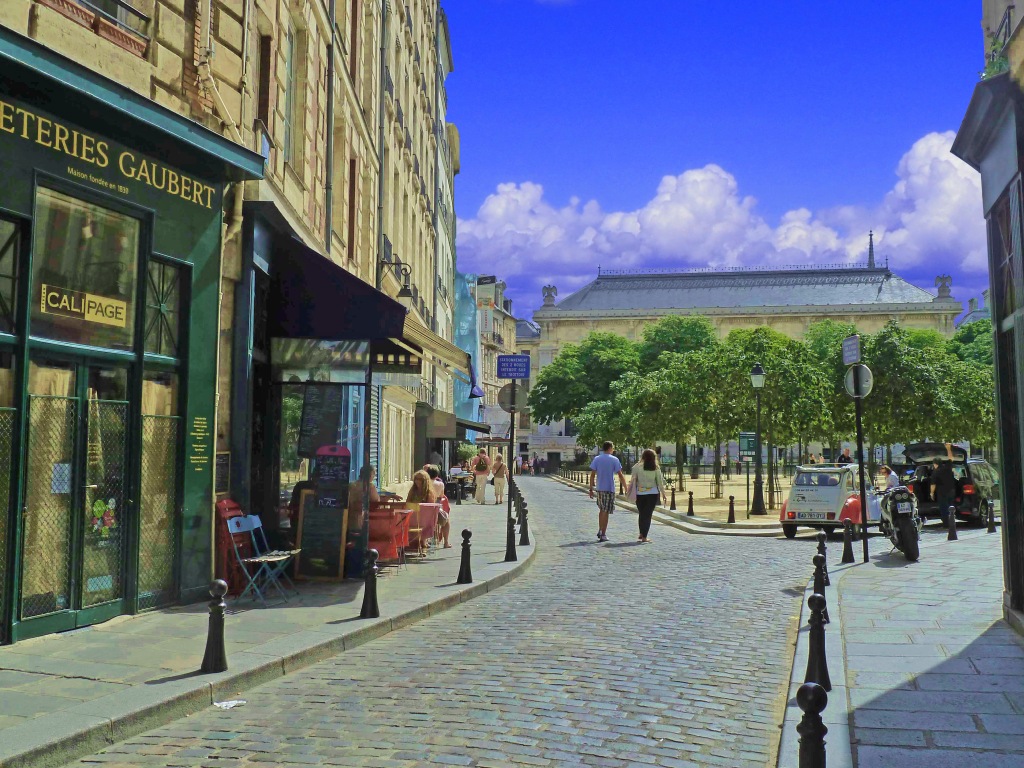
To finalise I will take you back to the river and the Pont Neuf at the very tip of the Île de la Cité. As you go over the bridge coming to around the midway point of the island you find a narrow street on the right. Going through this entrance way the narrow road opens up into a most beautiful space – Place Dauphine. For me this is a very favourite spot in Paris, a quiet place with many relaxing cafes and restaurants intertwined between the gorgeous apartments. It is leafy and tranquil yet but a stone’s throw from the noisy hordes congregating around Notre Dame. It is clear that few tourists even know this is here and selfishly long may that continue. It is a delightful space and to eat here or just enjoy a coffee is a joy. The pretty cobbled streets of Place Dauphine inevitably appeared in ‘Midnight in Paris’. If you go and sip a coffee at Restaurant Paul at number 15 Place Dauphine you can if you close your eyes just hear the gentle sound of the horses hooves drawing the approaching Belle Époque carriage along to the terrace. You can certainly imagine that scene. The ambiance of this square has retained its charm effortlessly down the decades – a place to savour and to relax.
Hemingway burned his bridges with his ‘friends’ in Paris, cruelly portraying many of them as characters in his novels, making no attempt to hide as to who he was basing his writing on. Most of all he discarded the woman he loved and lost the stability of the family he had around him. He has left a romantic portrait of Paris that is portrayed in ‘Midnight in Paris’ and like much of the best art and music this is a legacy based on the suffering of the tortured artist. His footsteps make for an interesting walk through this quarter of Paris. I could walk farther but I am as my friends have complained perhaps a little over active in that department. So I will consider a wider audience and end my tour sitting at the terrace of Restaurant Paul – but tomorrow is another day.
I hope to convey just what these people meant to us and how Paris bound all the best of memories together but it is a slower process. As I said Paris is throwing up too many ideas and I think it will produce two books rather than one. Just adding my love of its history to the book gave me a challenge to fit it all in. I have a passion for the time of the occupation, perhaps because I know that I would have been personally caught up in all its horror had I been living in Paris back then. I find it fascinating and hope to convey that a consideration of those events should not be overlooked by the visitor. No, Paris unlike Provence cannot be based around wonderful long lunches, it needs more effort for a visitor to get full value from a visit. I loved the writing and research for this book but despite Hemingway dwarfing me as a writer I do possess something he relinquished – I can write of Paris without any regrets.
